Biology Resources
At the moment this is a placeholder page. I’ll be adding ecology resources from the old grade 10 course as I get them converted.
Copyright on all materials on this site is retained by the authors. You are granted a limited license to reproduce these resources for classroom use, provided the copyright notices are not removed. Charging a fee for these resources, or distributing them in any way outside your classroom, is prohibited.
Understanding Ecosystems
E.O. Wilson's Life on Earth
On June 30, 2014, the E.O. Wilson Biodiversity Foundation released the ground-breaking new high school biology textbook E.O. Wilson’s Life on Earth. We believe that education is the most important tool we have to face the challenges confronting our living planet. Life on Earth was created to instruct and inspire students, the future stewards of Earth.
Life on Earth is an iBooks Textbook consisting of 41 chapters in 7 separate units and can be downloaded for free from the iBooks Store. The text provides a complete, original, standards-based, media-rich curriculum to give high school students a deep understanding of all of the central topics of introductory biology.
To create Life on Earth, the E.O. Wilson Biodiversity Foundation brought together a team consisting of educators, writers, multimedia artists, 3D animators trained in science and cinema, and textbook professionals, led by naturalist Edward O. Wilson. The editorial team, headed by Morgan Ryan, worked in full partnership with the Boston-based scientific graphics company Digizyme, Inc, headed by Gaël McGill, PhD, with the goal of creating a cultural landmark—a portal that will introduce students to the grandest story there is, the story of life on Earth, from molecules to ecosystems, from the origin of life to the modern awareness that we control the environment we live in.
Digital textbooks are poised to transform education. The richness and immediacy of vibrant multimedia lessons will transform how students learn and how instructors teach. Our textbook development team is thrilled by the things we are able to deliver that were never possible before. We navigate inside a virtual cell. We take students by helicopter to the Gorongosa landscape in Africa to explain the succession of plants and animals over time.
Today’s high school biology students will be tomorrow’s biochemists, explorers, environmental policy makers, park rangers, and informed citizens. E.O. Wilson’s Life on Earth was created to prepare them for their work.
Life on Earth is a gift from the E.O. Wilson Biodiversity Foundation for students, families, and concerned individuals. It is available now for free in 151 countries and has already been adopted in many classrooms. Our goal for 2014–2015 is to promote its use in classrooms everywhere. If you share our goals for educational and environmental awareness, please support the E.O. Wilson Biodiversity Foundation and join us in promoting a culture of stewardship in which people are inspired to conserve and protect our biological inheritance.
Life on Earth is an iBooks Textbook consisting of 41 chapters in 7 separate units and can be downloaded for free from the iBooks Store. The text provides a complete, original, standards-based, media-rich curriculum to give high school students a deep understanding of all of the central topics of introductory biology.
To create Life on Earth, the E.O. Wilson Biodiversity Foundation brought together a team consisting of educators, writers, multimedia artists, 3D animators trained in science and cinema, and textbook professionals, led by naturalist Edward O. Wilson. The editorial team, headed by Morgan Ryan, worked in full partnership with the Boston-based scientific graphics company Digizyme, Inc, headed by Gaël McGill, PhD, with the goal of creating a cultural landmark—a portal that will introduce students to the grandest story there is, the story of life on Earth, from molecules to ecosystems, from the origin of life to the modern awareness that we control the environment we live in.
Digital textbooks are poised to transform education. The richness and immediacy of vibrant multimedia lessons will transform how students learn and how instructors teach. Our textbook development team is thrilled by the things we are able to deliver that were never possible before. We navigate inside a virtual cell. We take students by helicopter to the Gorongosa landscape in Africa to explain the succession of plants and animals over time.
Today’s high school biology students will be tomorrow’s biochemists, explorers, environmental policy makers, park rangers, and informed citizens. E.O. Wilson’s Life on Earth was created to prepare them for their work.
Life on Earth is a gift from the E.O. Wilson Biodiversity Foundation for students, families, and concerned individuals. It is available now for free in 151 countries and has already been adopted in many classrooms. Our goal for 2014–2015 is to promote its use in classrooms everywhere. If you share our goals for educational and environmental awareness, please support the E.O. Wilson Biodiversity Foundation and join us in promoting a culture of stewardship in which people are inspired to conserve and protect our biological inheritance.
Behavioural Ecology
In Our Time is a wonderful series on BBC Radio 4.
What factors influence where and what an animal chooses to eat? Why do some animals mate for life whilst others are promiscuous? Behavioural ecologists approach questions like these using Darwin's theory of natural selection, along with ideas drawn from game theory and the economics of consumer choice.
Scientists had always been interested in why animals behave as they do, but before behavioural ecology this area of zoology never got much beyond a collection of interesting anecdotes. Behavioural ecology gave researchers techniques for constructing rigorous mathematical models of how animals act under different circumstances, and for predicting how they will react if circumstances change. Behavioural ecology emerged as a branch of zoology in the second half of the 20th century and proponents say it revolutionized our understanding of animals in their environments.
What factors influence where and what an animal chooses to eat? Why do some animals mate for life whilst others are promiscuous? Behavioural ecologists approach questions like these using Darwin's theory of natural selection, along with ideas drawn from game theory and the economics of consumer choice.
Scientists had always been interested in why animals behave as they do, but before behavioural ecology this area of zoology never got much beyond a collection of interesting anecdotes. Behavioural ecology gave researchers techniques for constructing rigorous mathematical models of how animals act under different circumstances, and for predicting how they will react if circumstances change. Behavioural ecology emerged as a branch of zoology in the second half of the 20th century and proponents say it revolutionized our understanding of animals in their environments.
Phylo — DIY Collectable Card Game
Why?
Phylo is a project that began as a reaction to the following nugget of information: Kids know more about Pokemon creatures than they do about real creatures*. We think there’s something wrong with that. Apparently, so do many others.What?
Phylo is: (1) a card game that makes use of the wonderful, complex, and inspiring things that inform the notion of biodiversity; (2) an exercise in crowd sourcing, open access, and open game development; and (3) FREAKIN’ AWESOME!Who?
The phylo project is the product of the kind and (frankly) amazing contributions of many many individuals who have given art, science expertise, gaming advice, programming chops, and more. A card usually begins its life by someone submitting art to a Flickr pool, but you can also develop new games, help out with programming, or providing general feedback by leaving comments on the blog or forum.How?
You can start quickly by printing yourself a deck and checking out a set of rules. Alternatively, you can just collect and print the cards by going to the card section and “select”ing the ones you like. We’re starting to amass a wide variety of different decks, some of which are high quality and available for purchase!This is a really cool-looking project, spearheaded by David Ng at the UBC Office of Learning Technologies. Check out the web site (http://phylogame.org) for a history of the project, printable card decks, and more information on the project.
Snowbirds
Winter is coming, and your flock of snow geese must make their annual migration south. Your objective is to guide your flock from North to South, along a series of randomly constructed journeys. At each location, you will need to make the best use of your limited actions to keep your flock healthy, well-fed, and always on the move. Success depends on balancing the resources available against the risks of the journey.
Action cards may be played for one of several purposes, but as single-use resources, must be balanced against competing needs. Will you forage for food, or fly on an empty belly? Each flight brings a roll of the dice, and a risk of exhaustion, which you can offset by sacrificing future flights. Exhaustion and hunger always loom. Your goal is to reach the South before running out of actions, before your flock is too worn out to continue.
Can you fly them all home?
This interesting little game by Brian Garthwaite is a free print-and-play card game made available under a Creative Commons license. It seems simple: fly your flock of geese south, but you have a limited number of action cards and, like real geese, must make trade-offs to reach your destination. There is one expansion currently available with more in the works.
There are a number of computer simulations out there, but I confess I have a weakness for old-fashioned paper simulations, as they often promote a deeper understanding. This little game is worth a look. A cool class project might be adding specific map cards representing actual locations near your school.
The basic game is a solitaire game. The first expansion, Sunset Skies, adds rules for a two-player game in which players must cooperate and compete to finish their migration.
The game is currently hosted on Board Game Geek, a web site devoted to non-computer games. You will have to create an account to download the files, but it’s free — and while you’re there you might find other free print-and-play games to enjoy!
Action cards may be played for one of several purposes, but as single-use resources, must be balanced against competing needs. Will you forage for food, or fly on an empty belly? Each flight brings a roll of the dice, and a risk of exhaustion, which you can offset by sacrificing future flights. Exhaustion and hunger always loom. Your goal is to reach the South before running out of actions, before your flock is too worn out to continue.
Can you fly them all home?
This interesting little game by Brian Garthwaite is a free print-and-play card game made available under a Creative Commons license. It seems simple: fly your flock of geese south, but you have a limited number of action cards and, like real geese, must make trade-offs to reach your destination. There is one expansion currently available with more in the works.
There are a number of computer simulations out there, but I confess I have a weakness for old-fashioned paper simulations, as they often promote a deeper understanding. This little game is worth a look. A cool class project might be adding specific map cards representing actual locations near your school.
The basic game is a solitaire game. The first expansion, Sunset Skies, adds rules for a two-player game in which players must cooperate and compete to finish their migration.
The game is currently hosted on Board Game Geek, a web site devoted to non-computer games. You will have to create an account to download the files, but it’s free — and while you’re there you might find other free print-and-play games to enjoy!
Biome Builder
In Biome Builder, your mission as an ecologist in training is to build a food chain from plants to apex predators- think algae to great white shark in the ocean. A biome is a community of plants and animals unique to a habitat. In this game you have 4 different habitats in which you start building a biome: the Amazon Rainforest, the Sahara Desert, the Pacific Ocean, and the American Prairie.
Everyone in the habitat has a job that helps make their environment a great place to live. In this game that job is eating… Stack plants and animals to build a food hierarchy and the player with the highest banked stacks wins!
This fast paced game is 2-4 player and takes 15 minutes to play. Each player creates food chains (biomes) in four different environments and banks their biomes for points. After going through the entire deck the player with the highest set of banked biomes wins.
Each player has two fields to build their biomes in and may bank a biome at any time. Each biome begins with a plant card. After a plant you must play a herbivore and omnivore. Then players can play predators and apex predator cards. Cards are labeled from 1-5 (plant to apex predator) and an ideal stack goes from 1 - 2 - 3 - 4 - 5, but that is not required to bank a stack. If someone stacks all cards from 1-5 they get an additional 10 points when adding scores. What kind of biomes will you build?
I backed this game on Kickstarter because it looked intriguing. It’s aimed at children younger than our grade nines, but the simple rules make it easy and fast to play. At the high school level I'd make the game a class project, dividing the students into teams to design cards for different biomes. In Ontario that might be Boreal Forest, Freshwater Lake, Deciduous Forest, and Tundra.
Everyone in the habitat has a job that helps make their environment a great place to live. In this game that job is eating… Stack plants and animals to build a food hierarchy and the player with the highest banked stacks wins!
This fast paced game is 2-4 player and takes 15 minutes to play. Each player creates food chains (biomes) in four different environments and banks their biomes for points. After going through the entire deck the player with the highest set of banked biomes wins.
Each player has two fields to build their biomes in and may bank a biome at any time. Each biome begins with a plant card. After a plant you must play a herbivore and omnivore. Then players can play predators and apex predator cards. Cards are labeled from 1-5 (plant to apex predator) and an ideal stack goes from 1 - 2 - 3 - 4 - 5, but that is not required to bank a stack. If someone stacks all cards from 1-5 they get an additional 10 points when adding scores. What kind of biomes will you build?
I backed this game on Kickstarter because it looked intriguing. It’s aimed at children younger than our grade nines, but the simple rules make it easy and fast to play. At the high school level I'd make the game a class project, dividing the students into teams to design cards for different biomes. In Ontario that might be Boreal Forest, Freshwater Lake, Deciduous Forest, and Tundra.
Ecosystem
Build your own ecological network in Ecosystem, a biologically-derived card drafting game. Players choose, pass, and arrange eleven different card types consisting of organisms ranging from bees to bears and environments like streams and meadows. Earn points by aligning animals with habitats where they most flourish.
Biodiversity is rewarded while monocultures are penalized. Each time you play, you build a one-of-a-kind ecosystem, striving to balance the delicate connections between all living things.
Possibly more suited for elementary school, this simple game doesn't require any ecological knowledge to play. It is fast enough to easily play during a period. If I were to use it in a class, I'd have the students design their own deck based on the ecosystem near their community.
Biodiversity is rewarded while monocultures are penalized. Each time you play, you build a one-of-a-kind ecosystem, striving to balance the delicate connections between all living things.
Possibly more suited for elementary school, this simple game doesn't require any ecological knowledge to play. It is fast enough to easily play during a period. If I were to use it in a class, I'd have the students design their own deck based on the ecosystem near their community.
Natural Ecosystems and Stewardship
PhyloBoreal
PhyloBoreal is an ecosystem card game about the boreal forest. Players use their cards to build and cause disturbances to a communal food web. The winner is the player who gains the most species points by creating a stable and diverse food web.
PhyloBoreal is a customized version of a card game called Phylo developed at the University of British Columbia. PhyloBoreal was designed by yours truly, Elly and Jonathan, because we think the boreal forest is a landscape of incredible beauty, importance, and diversity. We hope you will too!
The price of this game covers only the cost required to produce each deck—no profit is made. Please consider donating, or at least signing the petition at Boreal Birds Need Half [www.borealbirds.org] to help protect the boreal forest!
The artwork on these cards is top-notch, and as much of Ontario is covered by boreal forest this game could easily find a place in the ecology unit.
I’ve listed this under Natural Ecosystems and Stewardship because the special action cards in PhyoBoreal include stewardship, as well as exploitation.
PhyloBoreal is a customized version of a card game called Phylo developed at the University of British Columbia. PhyloBoreal was designed by yours truly, Elly and Jonathan, because we think the boreal forest is a landscape of incredible beauty, importance, and diversity. We hope you will too!
The price of this game covers only the cost required to produce each deck—no profit is made. Please consider donating, or at least signing the petition at Boreal Birds Need Half [www.borealbirds.org] to help protect the boreal forest!
The artwork on these cards is top-notch, and as much of Ontario is covered by boreal forest this game could easily find a place in the ecology unit.
I’ve listed this under Natural Ecosystems and Stewardship because the special action cards in PhyoBoreal include stewardship, as well as exploitation.
Phylo: WSF Coral Reef Deck
This deck, hosted by the World Science Festival, is an "expert" STARTER deck due to the unconventional food chains in the habitat being represented. It includes a variety of organisms that are relevant to coral reefs ecosystems. Note that this "advanced" game has been play tested for kids ages 10 and up.
The WSF Coral Reef Deck was produced in collaboration with the 2012 World Science Festival‘s coral reef exhibit, Reefs As Never Before Seen. The exhibit premiered on May 31st, 2012, at the American Museum of Natural History in New York City.
This is a beautiful Phylo deck. You can download it from the Phylo website or have a copy professionally printed at The Game Crafter.
In addition to the reef ecosystem, the game includes event cards for threats like shoreline development, ocean acidification and warming, and too many scuba divers. These make it a useful activity for both the grade 9 ecosystems and grade 10 climate change units.
The WSF Coral Reef Deck was produced in collaboration with the 2012 World Science Festival‘s coral reef exhibit, Reefs As Never Before Seen. The exhibit premiered on May 31st, 2012, at the American Museum of Natural History in New York City.
This is a beautiful Phylo deck. You can download it from the Phylo website or have a copy professionally printed at The Game Crafter.
In addition to the reef ecosystem, the game includes event cards for threats like shoreline development, ocean acidification and warming, and too many scuba divers. These make it a useful activity for both the grade 9 ecosystems and grade 10 climate change units.
Tribes Cards
Tribes is a neat little game published by Steve Jackson Games. In it, the players each take the role of a palaeolithic tribesperson. They can be male or female, and a hunter, gatherer, or crafter. The winner of the game is the player with the most surviving adult children.
Back when ecology was part of the grade 10 curriculum, I would run a Tribes game over a semester with my gifted students, taking 5 minutes per period to handle each turn, and doing all the dice-rolling and book-keeping outside of class time. I used these cards and little envelopes to simplify accounting: students could trade what they wanted during the five-minute turn, and wrote a short note with their actions for the next season. I resolved all their actions between classes, and added food obtained and tools made, as well as took out food eaten.
It worked well with gifted 15-year-olds. I think it would need some simplification for younger students.
What are the links to ecology? In addition to hunting grounds getting hunted out and needing time to recover, the tribe itself is part of the ecosystem, and students can experience the stresses of overpopulation, migration, and boom-bust cycles.
Back when ecology was part of the grade 10 curriculum, I would run a Tribes game over a semester with my gifted students, taking 5 minutes per period to handle each turn, and doing all the dice-rolling and book-keeping outside of class time. I used these cards and little envelopes to simplify accounting: students could trade what they wanted during the five-minute turn, and wrote a short note with their actions for the next season. I resolved all their actions between classes, and added food obtained and tools made, as well as took out food eaten.
It worked well with gifted 15-year-olds. I think it would need some simplification for younger students.
What are the links to ecology? In addition to hunting grounds getting hunted out and needing time to recover, the tribe itself is part of the ecosystem, and students can experience the stresses of overpopulation, migration, and boom-bust cycles.
Smokejumpers
Increasing industrialization of both the Alberta Tar Sands and Ontario's Ring of Fire, coupled with a longer fire season brought on by global climate change, are a potential disaster-in-waiting. City students have very little 'feel' for how fast a forest fire can spread. This simulation can help.
As the crew looks out the windows of the twin otter, a smoke column stands out as the only interruption in a sea of spruce. Candling flames jump into the sky as individual trees burst into combustion. The plane slows down to circle the fire and crepe paper is tossed out to test the wind. Then the smokejumpers, each clothed in kevlar and packing 35 pounds of gear, jump through the door and parachute 1500 feet to a postage stamp opening in the stand. Polaskis begin to dig into the thick duff layer and in a few hours a trench is dug around a fire the size of a football field. As the fire subsides into smoldering pockets, the jumpers take their first break. Now it's Miller time.
Smokejumpers is a solitaire game simulating fire fighting efforts. The player assumes the role of a fire boss and must decide the most effective way of fighting a forest fire - both in terms of tactics used and value lost. Fire growth is governed by the game system, with wind and fuel moisture content as the driving forces. The goal of the player is to contain the fire while keeping costs low and still be able to get home in time for supper.
The four 11 x 17" maps represent typical forested areas of predominantly coniferous (evergreen) stands. The maps are geomorphic so they can be joined in combinations to create larger playing areas. The 240 die-cut, back-printed counters represent fires (active and soldering), fire fighting resosurces (crews, helicopters and other equipment), and containment lines.
Smokejumpers is an intriguing simulation. The rules are based on the actual models used by the Canadian Forest Service, where Dr. Anderson is a research scientist.
As the crew looks out the windows of the twin otter, a smoke column stands out as the only interruption in a sea of spruce. Candling flames jump into the sky as individual trees burst into combustion. The plane slows down to circle the fire and crepe paper is tossed out to test the wind. Then the smokejumpers, each clothed in kevlar and packing 35 pounds of gear, jump through the door and parachute 1500 feet to a postage stamp opening in the stand. Polaskis begin to dig into the thick duff layer and in a few hours a trench is dug around a fire the size of a football field. As the fire subsides into smoldering pockets, the jumpers take their first break. Now it's Miller time.
Smokejumpers is a solitaire game simulating fire fighting efforts. The player assumes the role of a fire boss and must decide the most effective way of fighting a forest fire - both in terms of tactics used and value lost. Fire growth is governed by the game system, with wind and fuel moisture content as the driving forces. The goal of the player is to contain the fire while keeping costs low and still be able to get home in time for supper.
The four 11 x 17" maps represent typical forested areas of predominantly coniferous (evergreen) stands. The maps are geomorphic so they can be joined in combinations to create larger playing areas. The 240 die-cut, back-printed counters represent fires (active and soldering), fire fighting resosurces (crews, helicopters and other equipment), and containment lines.
Smokejumpers is an intriguing simulation. The rules are based on the actual models used by the Canadian Forest Service, where Dr. Anderson is a research scientist.
Forestation
Forestation is a worker placement strategy game for ages 10 and up that has players create and sustain a forest teeming with flora and fauna. But look out! – poachers and illegal loggers are common visitors eager to hunt your animals and cut down your trees. Try to achieve a balance in your ecosystem where predators need to eat prey, prey require trees, and fish need rivers to survive. Forestation’s realistic illustrations and amazing gameplay will encourage you to create the best forest possible to save your wildlife from extinction! Forestation is intended for nature-loving people of all ages looking for a strategic challenge, as well as children wanting to learn about the balance of nature.
Forestation is a game for 2-4 players. Playing time varies from 1-2 hours depending upon the number of players and their familiarity with the game.
10% of all proceeds will be split between:
FSC MIXED CERTIFICATION – This game will be manufactured in accordance with FSC (Forest Stewardship Council) certification by NSF in the Netherlands which ensures that products come from responsibly managed forests that are evaluated to meet FSC’s strict environmental and social standards.
This game is too complex (and quite costly) for use in a regular classroom. It does do a nice job of illustrating the trade-offs involved in stewardship decisions. I could see using it as the basis for an ongoing group activity. It would also make a good loaner item for (trusted) students who wanted to deepen their knowledge of ecological interdependencies.
Forestation is a game for 2-4 players. Playing time varies from 1-2 hours depending upon the number of players and their familiarity with the game.
10% of all proceeds will be split between:
- the Wilderness Committee
- the Raincoast Conservation Foundation
FSC MIXED CERTIFICATION – This game will be manufactured in accordance with FSC (Forest Stewardship Council) certification by NSF in the Netherlands which ensures that products come from responsibly managed forests that are evaluated to meet FSC’s strict environmental and social standards.
This game is too complex (and quite costly) for use in a regular classroom. It does do a nice job of illustrating the trade-offs involved in stewardship decisions. I could see using it as the basis for an ongoing group activity. It would also make a good loaner item for (trusted) students who wanted to deepen their knowledge of ecological interdependencies.
Upstream
Welcome to the wild. Welcome to Upstream: A game about the natural cycle of life.
Like every spring, the melted snow fills the riverbeds, opening the way back home for the Salmon, after a life swimming in the oceans… Each player controls a bank of salmons swimming upstream to lay their eggs where they were born. During their journey they will face hungry bears, fierce birds of prey, as well as patient fishermen, which they must avoid in order to survive. These are not the only hazards the Salmons must face, as each round of play the strength of the water flow will cause some pieces of the river to fall back, making it impossible for some fishes to keep their way upstream.
Upstream is an eurotrash-style game of tile placement and grid movement through an action point allowance system for 2 to 5 players of ages 6 and up. Games last around 20 minutes.
This lovely little game gives players a good idea of the dangers salmon face as they head upstream to spawn. It plays quickly so is easy for students to write (and test) new rules to add additional dangers for the salmon to overcome, such as dams, chemical spills, sport and commercial fishing, and so on.
At €25 it’s a tad expensive, especially when you add shipping from Europe, but the artwork is wonderful.
2 Tomatoes Games is currently making a print-and-play version available for free, which is very generous of them.
Like every spring, the melted snow fills the riverbeds, opening the way back home for the Salmon, after a life swimming in the oceans… Each player controls a bank of salmons swimming upstream to lay their eggs where they were born. During their journey they will face hungry bears, fierce birds of prey, as well as patient fishermen, which they must avoid in order to survive. These are not the only hazards the Salmons must face, as each round of play the strength of the water flow will cause some pieces of the river to fall back, making it impossible for some fishes to keep their way upstream.
Upstream is an eurotrash-style game of tile placement and grid movement through an action point allowance system for 2 to 5 players of ages 6 and up. Games last around 20 minutes.
This lovely little game gives players a good idea of the dangers salmon face as they head upstream to spawn. It plays quickly so is easy for students to write (and test) new rules to add additional dangers for the salmon to overcome, such as dams, chemical spills, sport and commercial fishing, and so on.
At €25 it’s a tad expensive, especially when you add shipping from Europe, but the artwork is wonderful.
2 Tomatoes Games is currently making a print-and-play version available for free, which is very generous of them.
In Our Time: Corals
In Our Time is a wonderful series on BBC Radio 4.
Melvyn Bragg and guests discuss the simple animals which informed Charles Darwin's first book, The Structure and Distribution of Coral Reefs, published in 1842. From corals, Darwin concluded that the Earth changed very slowly and was not fashioned by God. Now coral reefs, which some liken to undersea rainforests, are threatened by human activity, including fishing, pollution and climate change.
Melvyn Bragg and guests discuss the simple animals which informed Charles Darwin's first book, The Structure and Distribution of Coral Reefs, published in 1842. From corals, Darwin concluded that the Earth changed very slowly and was not fashioned by God. Now coral reefs, which some liken to undersea rainforests, are threatened by human activity, including fishing, pollution and climate change.
Ecosystems by Design
Food Forest
Food Forest is a unique, fun deck of cards that can be used to play games based on natural, organic gardening. Food Forest games help adults and children understand how plants interact - both in a garden and in the wild. Players learn about companion planting, the layers of a forest, beneficial insects, and principles of permanent agriculture, or Permaculture.
This deck comes with instructions for two games that can be played with the cards. More games can be found online, and you can even design your own! This deck is also an inspiring tool for designing your own food forest.
This is an excellent fit for the ecology unit. Although the plants are those found in New England, that’s similar enough to Ontario for many of our students — and there are blank cards so you can add local plants if you want.
The game is available in both hard copy and print-and-play versions.
This deck comes with instructions for two games that can be played with the cards. More games can be found online, and you can even design your own! This deck is also an inspiring tool for designing your own food forest.
This is an excellent fit for the ecology unit. Although the plants are those found in New England, that’s similar enough to Ontario for many of our students — and there are blank cards so you can add local plants if you want.
The game is available in both hard copy and print-and-play versions.
Minute Earth: How To (Literally) Save Earth
Farming erodes soil 50 times faster than it forms. We can change that, but will we?
This short three minute video from MinuteEarth looks at soil formation and degradation, especially the effects of farming practices on soil, and suggests a few sustainable farming techniques that would help.
This short three minute video from MinuteEarth looks at soil formation and degradation, especially the effects of farming practices on soil, and suggests a few sustainable farming techniques that would help.

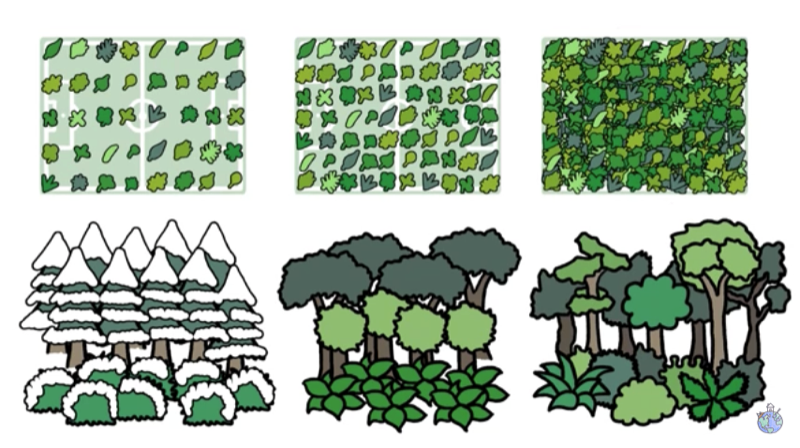
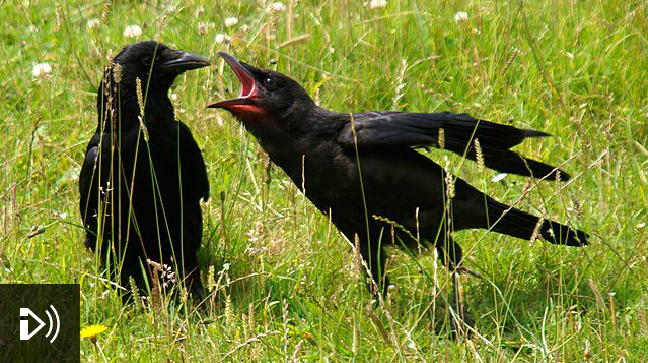
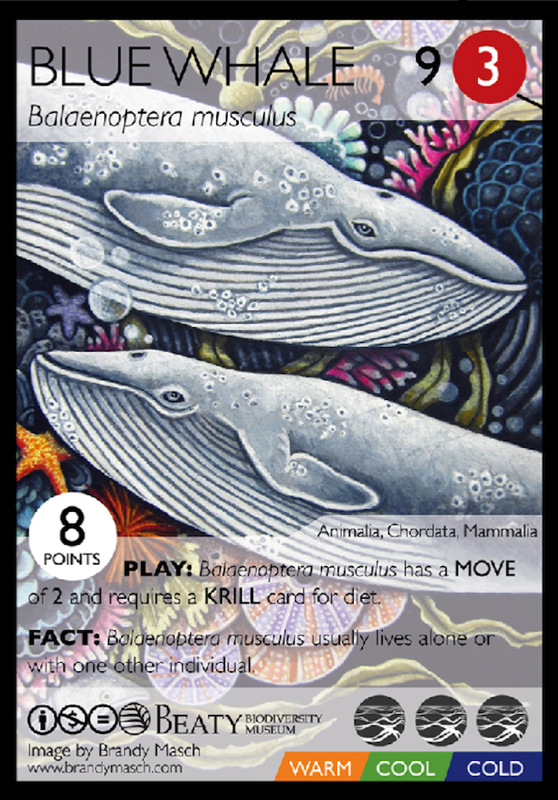
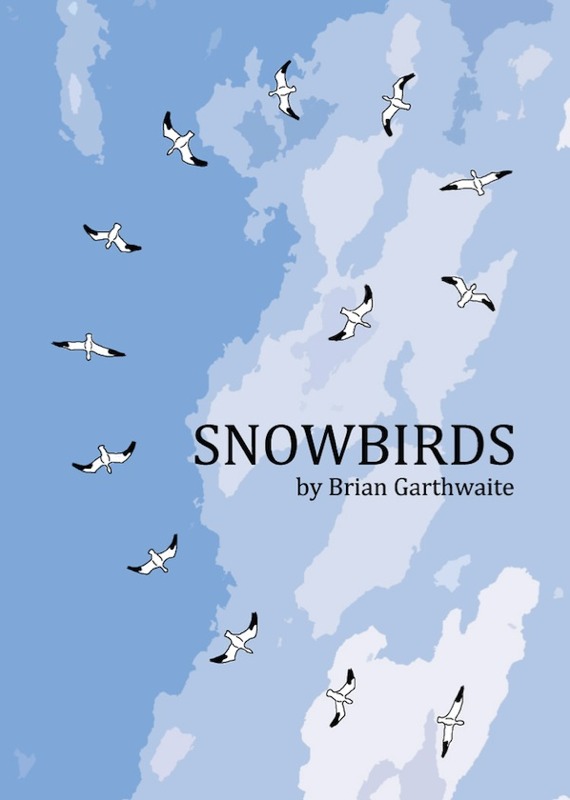

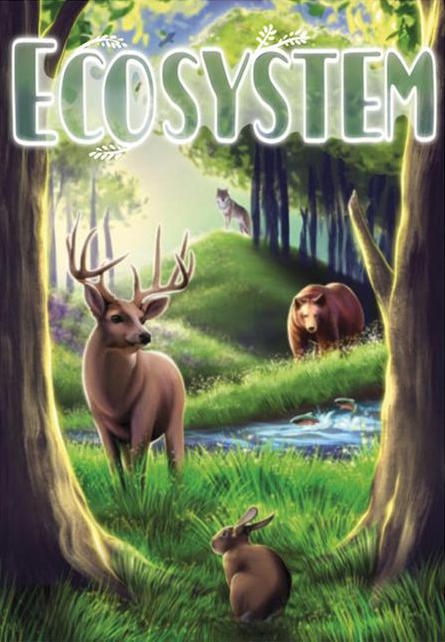


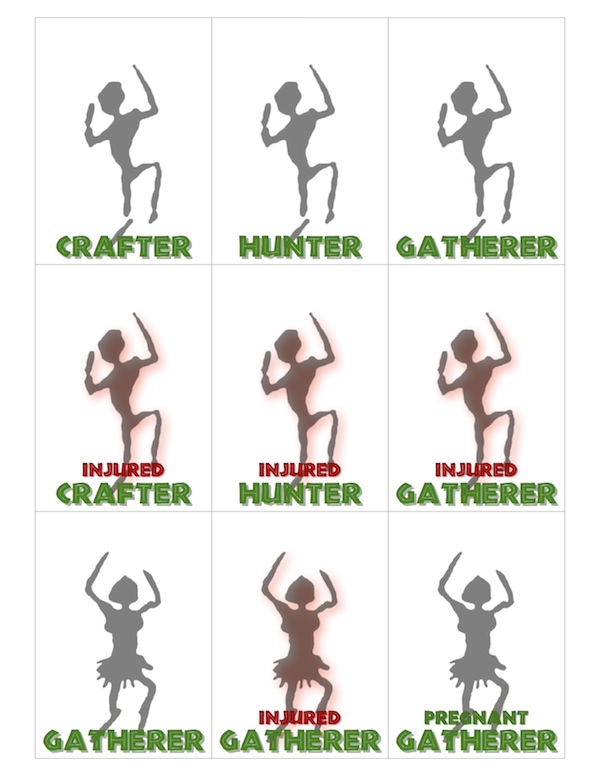
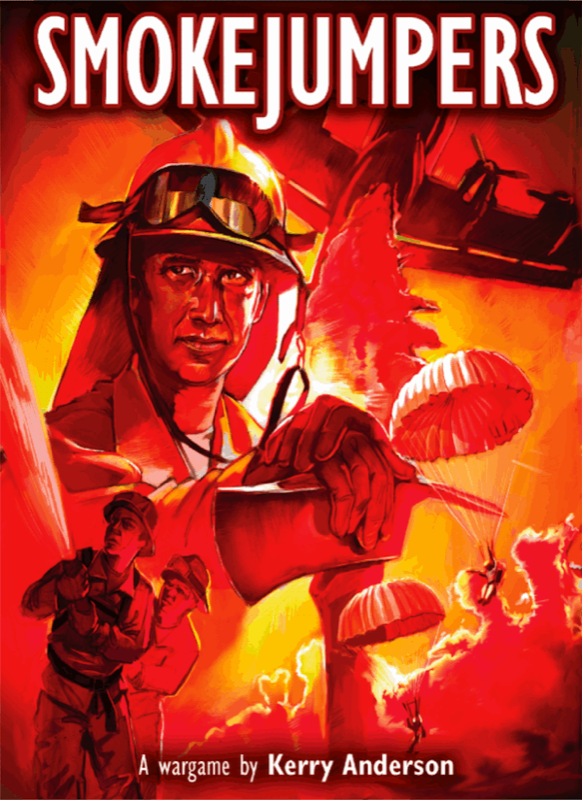
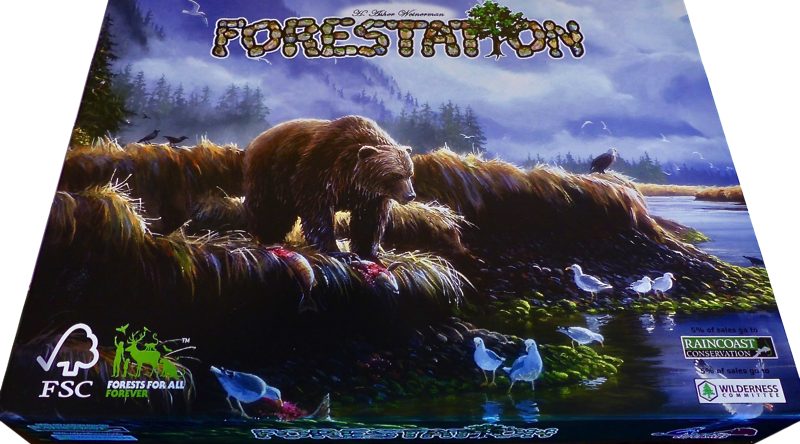
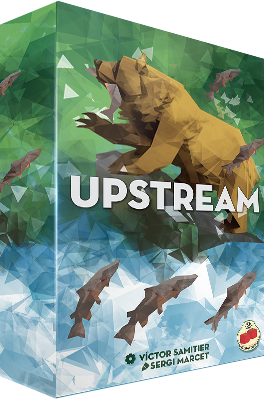
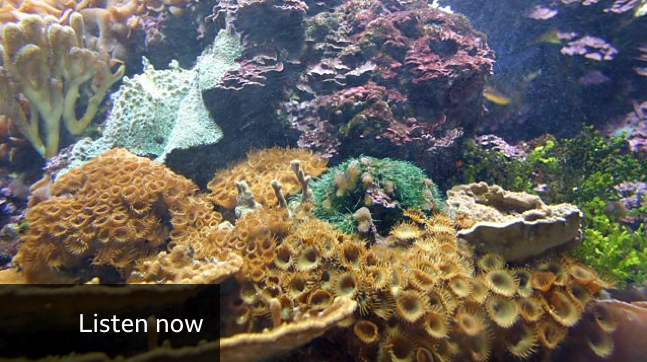
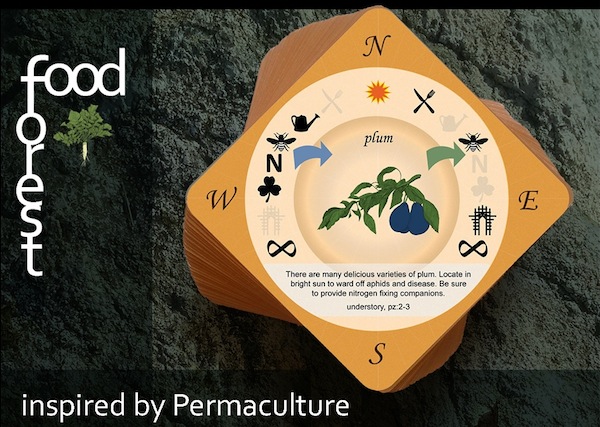
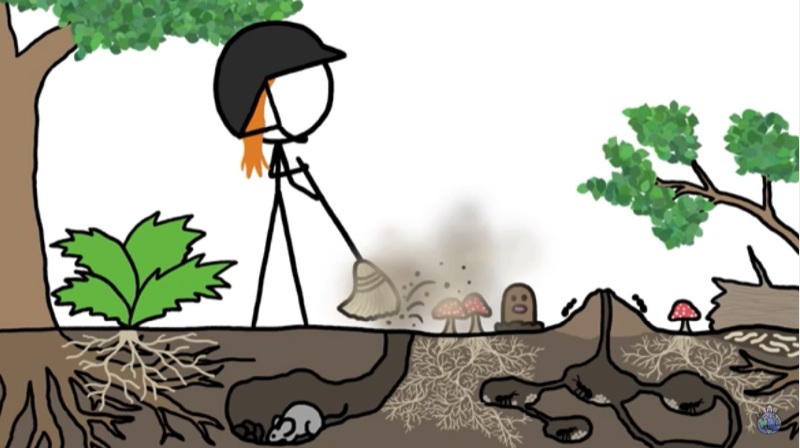
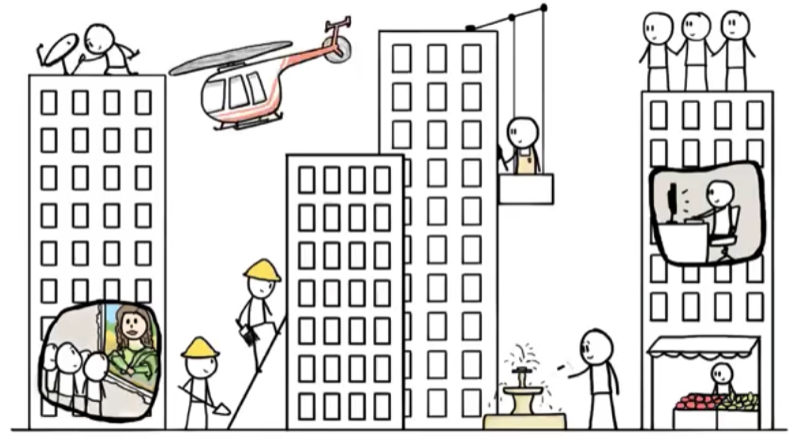
Teaching Science